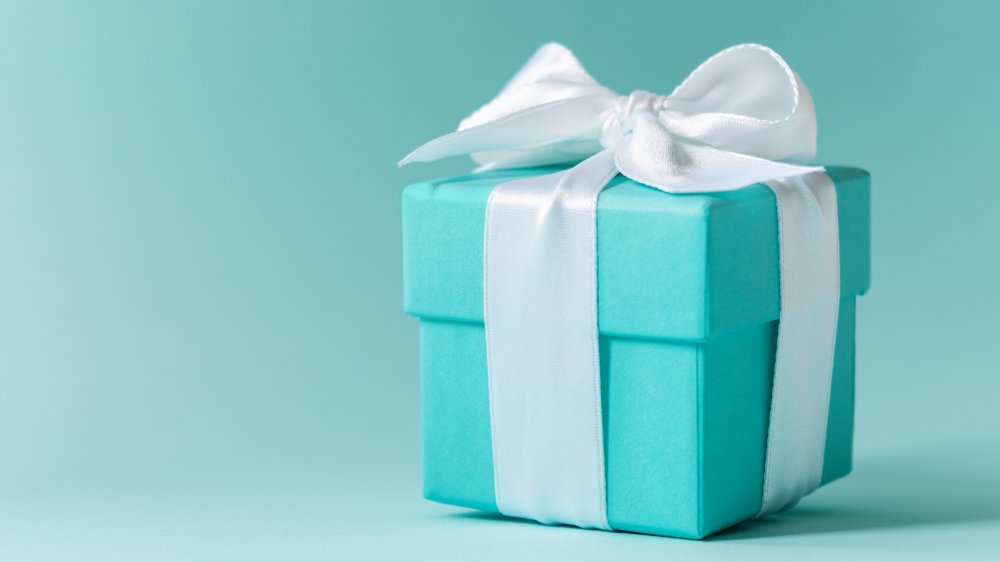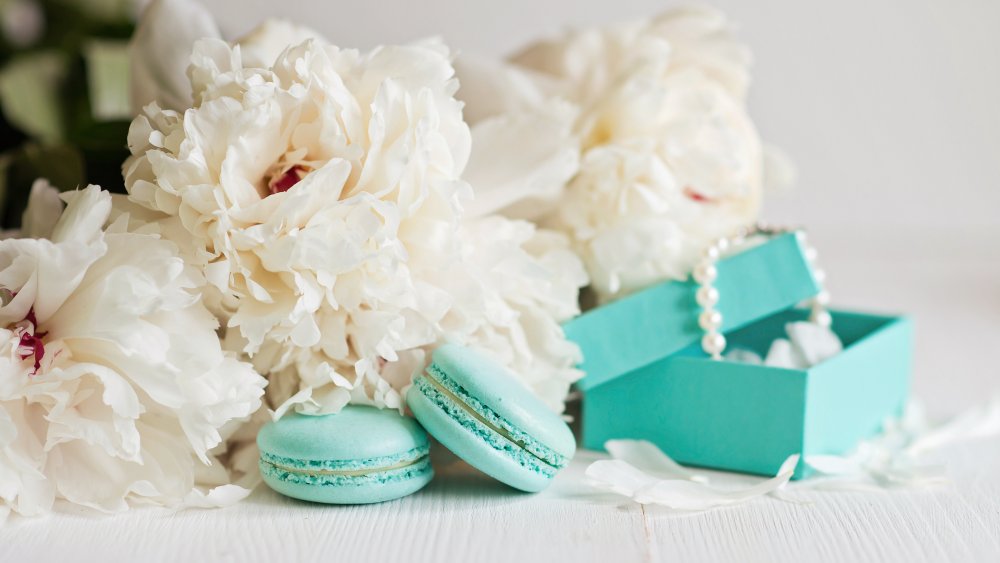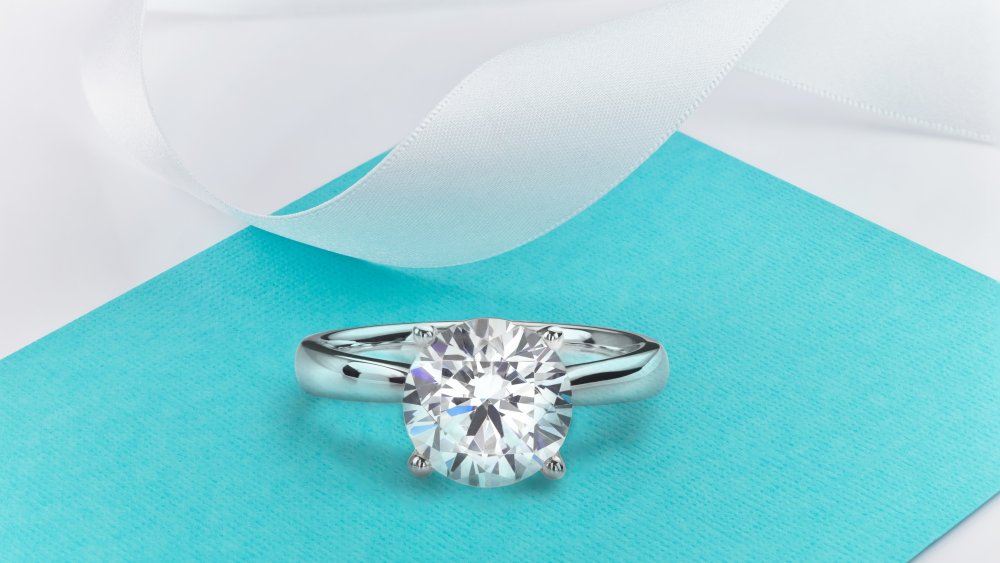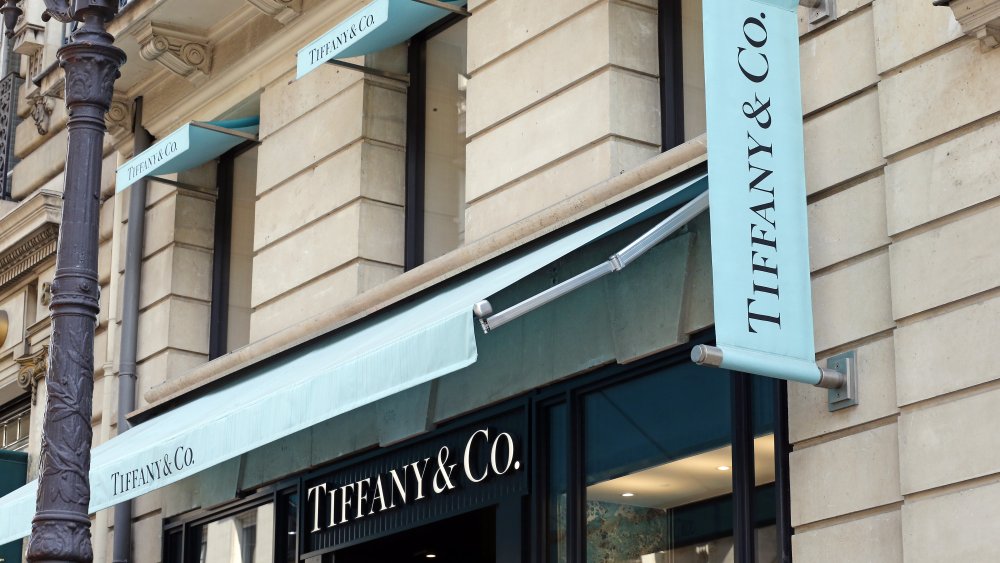The Untold Truth Of Tiffany & Co.
Today, Tiffany & Co. is synonymous with the most tasteful version of the high life. Just the sight of the familiar robin's egg blue box with its silky white ribbon is enough to fire up anyone's imagination: diamonds, gowns, dinner parties under chandeliers. When we see that box, we're all Holly Golightly, sipping our coffee, staring in, and dreaming of the life of luxury.
So how did Tiffany & Co. become the icon it is today? It started in 1837, when 25-year-old Charles Lewis Tiffany and his schoolmate John B. Young opened a "stationery and fancy goods" store, Tiffany & Young, with the help of a $1000 loan from Tiffany's father (via Connecticut Biographical Dictionary, Tiffany & Co. History). The store was in the downtown New York neighborhood now known at Tribeca on the corner of Broadway and Warren Street. The first day's sales total? Four dollars and ninety-eight cents (via Tiffany & Co. timeline).
Selling the "American style"
Before long, the Tiffany and Young had their finger on the pulse of its stylish New York audience, finding and perfecting the style around them. As Tiffany & Co.'s site puts it, they were inspired by the "fashionable ladies in silks, satins and beribboned bonnets faced a gauntlet of narrow streets teeming with horses and carriages. At Tiffany & Co. they discovered a newly emerging 'American style' that departed from the European design aesthetic, which was rooted in ceremonial patterns and the Victorian era's mannered opulence."
What did Tiffany offer in place of that old-fashioned look? "Patterns of simplicity, harmony and clarity." In 1848, the company began manufacturing jewelry, as the revolutions in Europe made it possible to buy gems and diamonds from aristocrats overseas at unusually low prices (via Lang Antiques). Tiffany & Co. became known for its diamonds. Soon, the store moved to Fifth Avenue and built its own building. Today, it's almost impossible to think about Fifth Avenue without thinking about Tiffany, and vice versa.
Becoming a giant in jewelry
In 1861, President Abraham Lincoln bought Mary Todd a Tiffany seed pearl necklace and earrings, She wore them to the inaugural ball for all to see. Five years later, Tiffany & Co. reached international audiences when it won the grand prize for silver craftsmanship at the 1867 World's Fair in Paris, marking the first time that American designers had achieved such a prestigious honor from a foreign jury.
The company became America's gold standard for jewelry (or diamond and silver standard, as the case may be), and by the time of Charles Lewis Tiffany's death in 1902, it was capitalized at $2.4 million. Under the art direction of Tiffany's son Louis Comfort Tiffany, the company became a world leader in Art Nouveau style. The biggest names in American society—the Vanderbilts, the Astors, the Whitneys—shopped Tiffany (FDR even purchased Eleanor's engagement there), and no matter the decade or the changes in aesthetic tastes, Tiffany & Co. stayed at the forefront of luxury design (via Business Insider).
In 1940, the flagship store that we think of today, that Audrey Hepburn gazed at through her sunglasses, opened up on 727 Fifth Avenue. This was where John F. Kennedy and Richard Nixon bought gifts for their wives, where Richard Burton shopped for Elizabeth Taylor, where Meg Ryan's Annie shopped for wedding china in Sleepless in Seattle.
The origins of Tiffany blue
How did Tiffany & Co. arrive at the shade so recognizable that it became the standard name for the color in everyday conversation? According to the Tiffany Blue page on the Tiffany & Co. site, the color "may have been chosen because of the popularity of the turquoise gemstone in 19th-century jewelry. Turquoise was also a favorite of Victorian brides who gave their attendants a dove-shaped brooch of turquoise as a wedding day memento."
In 1845, Charles Lewis Tiffany chose the color for the catalog, now known as the Blue Book, the first mail-order catalogue in the U.S. Its title page dubbed it a "Catalogue of Useful and Fancy Articles." Soon, it was the color of Tiffany's shopping bags, promotional materials, and of course jewelry boxes.
In 1906, they were already iconic. The New York Sun reported, "Tiffany has one thing in stock that you cannot buy of him for as much money as you may offer; he will only give it to you. And that is one of his boxes. The rule of the establishment is ironclad, never to allow a box bearing the name of the firm, to be taken out of the building except with an article which has been sold by them and for which they are responsible."
Tiffany's sticky situation in today's economy
Today, Tiffany is struggling. Its $16.2 billion acquisition deal with LVMH Moët Hennessy Louis Vuitton is currently falling to pieces, and LVMH is blaming Tiffany's mismanagement of business during the pandemic (via Wall Street Journal). LVMH said Tiffany's prospects "are very disappointing, and significantly inferior to those of comparable brands of the LVMH Group during this period." It's a messy situation, fraught with lawsuits (via Tiffany & Co.), finger-pointing, and even the intervention of the French foreign minister (via Reuters).
Tiffany lovers don't need to worry though — according to experts, Tiffany & Co. can weather this storm. As accomplished luxury retail consultant Robert Burke told Business of Fashion, "Tiffany will be OK... it offers an image and a history that is kind of second to none and is highly attractive because of that." After all, can you really put a price tag on centuries of defining American luxury?




